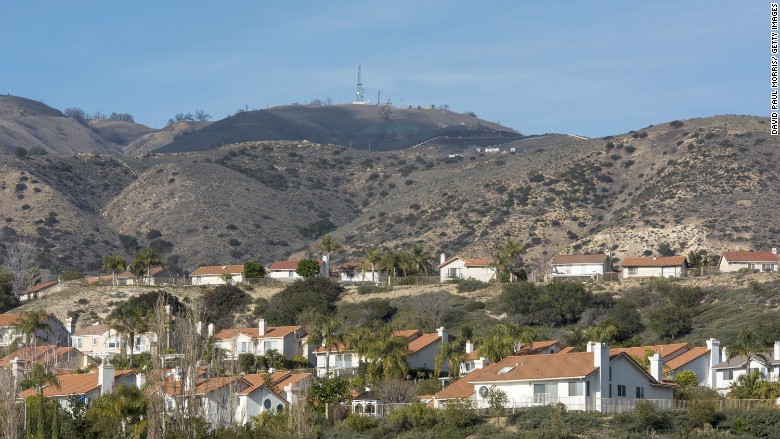
Southern California is always vulnerable to power outages during heat waves -- but the blackout risk facing millions is even greater this already-scorching summer.
Already, a few thousand residents in the Los Angeles area experienced power outages during Monday's heat wave. But that's just a small taste of the worst-case scenario California regulators are scrambling to avoid.
The main problem: the shutdown of a massive natural gas storage facility -- the Aliso Canyon field -- that is the chief backup supplier for the region's electric utilities during peak demand. The vital facility was shut down after a leak was discovered last October and it isn't back up and running yet.
Regulators recently warned the lack of gas supply could spark power outages that affect millions of customers during as many as 14 summer days.
Related: Does Donald Trump's energy plan to drill more make sense
The first big test came on Monday as temperatures in Pasadena soared as high as 112 degrees and Los Angeles experienced a June record for energy demand. Regulators and utilities implemented emergency plans and pleaded with residents to conserve power out of fear that gas supplies would run out.
Ultimately, there were only minimal power outages impacting just 5,000 out of 1.4 million customers serviced by the Los Angeles Department of Water and Power on Monday. The municipal utility said it had enough resources to meet its customer needs -- but warned of "heightened" risk in the weeks and months ahead.
"It's going to be something we have to pay attention to all summer long. It would be business as usual without the risk of gas curtailment," said Michael Webster, senior assistant general manager of power at the department.
Related: Resilient U.S. oil companies start pumping again
The problem is that during times of heavy demand (like heat waves), Southern California meets demand by relying on extra power stations, including gas-fired plants. But there just aren't enough gas pipelines for what's needed. Aliso Canyon is the only gas storage facility that can immediately respond to rapid demand spikes for the region's 17 gas-fired plants.
But Aliso Canyon, which is owned by SoCalGas, suffered a huge gas leak last October that forced the relocation of thousands of residents in the region. The leak was plugged in February, but the facility may not be fully operational until later this summer.
Related: U.S. could be energy independent
Regulators recently warned of "significant risk" that there won't be enough natural gas to power up electricity during critical times this summer. That could be large enough to cause outages for as many as 14 summer days, the California Independent System Operator said in a preparedness plan.
SoCalGas acknowledged in a statement that the limited availability of natural gas from Aliso Canyon means there is "less natural gas locally to produce electricity, particularly during high-usage periods, which could lead to power outages."
Related: Fracking fuels half of U.S. oil output
The local supply constraints stand in stark contrast with the large natural gas glut fueled by the shale boom. The oversupply situation sent natural gas prices plunging earlier this year to prices not seen since the 1990s.
In fact, the U.S. Department of Energy expects 2016 to be the first full year in which natural gas will have replaced coal as the chief source of electric power nationwide.
Natural gas has played a bigger role for California as the state has tried to phase out coal and nuclear power. In fact, California's last remaining nuclear power plant, the Diablo Canyon nuclear plant, said Tuesday it will close in 2025.


